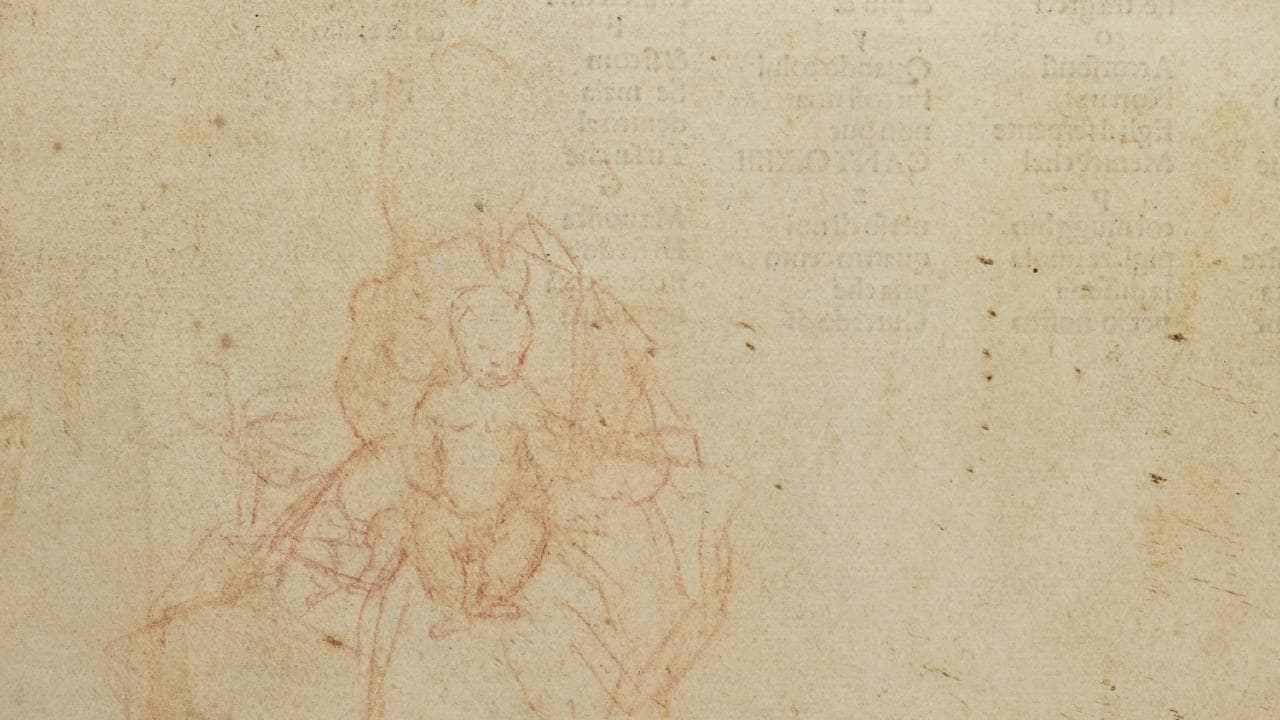An historic sketch by Italian Renaissance artist Giorgione has been found inside one of Sydney University’s rare books.
Kim Wilson, the university’s academic liaison, found the piece tucked in the back pages of a copy of Dante’s Divine Comedy (1497). The intricate, red chalk sketch is believed to be depicting the Madonna and Child. It bears many similarities to the artist’s more intricate works and is as such, thought by experts to be a precursor to the works Holy Family and Castelfranco Madonna.
The sketch and inscription are particularly rare, being one of only three pieces in the world confirmed to be in the artist’s hand. Giorgione’s other artworks are located in New York and Rotterdam but this recent artefact is the only piece accompanied by a relevant inscription.
The discovery was made back in September 2017 but has only recently been announced. The process of investigating the art and its links to its creator have been extensive. Many academics including Emeritus Professor Nerida Newbigin from the University of Sydney’s (USyd) Department of Italian studies — who translated the inscription from 16th Century Venetian dialect — have been involved in its verification.
Experts understand that the inscription was made at the time of Giorgione’s death in 1510, making it a remarkable historical artefact that sheds new light on Giorgione’s age and time of death, facts previously unknown before this finding.
The sketch and inscription are particularly rare, one of only three pieces in the world confirmed to be in the artist’s hand. Giorgione’s other artworks are located in New York and Rotterdam.
The significance of the sketch is far reaching. Students at the University look for reference of this discovery in their classes. A Masters of Museum and Heritage student at the University said of “The fact that this particular sketch was done by such an illusive renaissance figure propels a sense of mystery and opens up new avenues for study.”
Such a find takes an important place in the University’s history of collecting and distributing rare and revelatory artefacts. Last year, Honi reported on a 2010 anonymous donation of Picasso’s 1935 work ‘Jeune Fille Endormie.’ The endowment was bestowed along with a request that it be sold to fund further scientific research at the University.
The University also obtained a one of a kind first edition of Darwin’s Origin of Species in its rare book library, reportedly almost a decade ago. Only 1250 copies of this edition were printed, valued at almost $200,000.
Such developments within the universities walls, offer Art History, Archeology and Curatorial students in particular, a current case through which they can analyse their university’s role in the distribution of important artefacts — a concept that it appears many students appreciate.
Amy Thomson De Zylva, an art history honours student at the University said of the Giorgione work, ‘It’s wonderful to be a student at the time of this discovery and to experience the fresh energy it brings to art history studies.’





